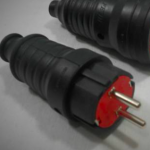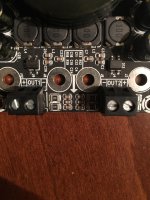On the German forum, some one received 32513 instead of 32512.
Sure had replied that it is the same PCB for both models. The members of this forum confirmed that it was the same chips.
Sure had replied that it is the same PCB for both models. The members of this forum confirmed that it was the same chips.
I received my board today. It turns out they sent me a 32313 instead of the 32312 that I ordered.
Will contact them to get a refund for the price difference between the boards.
Looking forward to hear what board you get. Seems like it's a lottery.
Tomorrow comes the Mean Well HLG320H-36A I ordered from another supplier. Hopefully I'll find the time to try them next weekend together with a pre amp from Emblas Audio.
Looks like we are fine with the board. It is the 32512 with board that has 32313 print on🙂
How will you terminate your HLG-320H-36A? I have no idea🙂
If they are the exact same amp board I'm ok keeping it.
But I think we should all get a 20 USD refund if that is the case, 32313 is 59.99 USD and 32312 is 79.99 USD since they list both amps but priced differently.
Sure Electronics' webstore 2 x 400 Watt Class D Audio Amplifier Board Compact - T-AMP
http://store3.sure-electronics.com/2-x-500-watt-class-d-audio-amplifier-board-compact-t-amp
But I think we should all get a 20 USD refund if that is the case, 32313 is 59.99 USD and 32312 is 79.99 USD since they list both amps but priced differently.
Sure Electronics' webstore 2 x 400 Watt Class D Audio Amplifier Board Compact - T-AMP
http://store3.sure-electronics.com/2-x-500-watt-class-d-audio-amplifier-board-compact-t-amp
How will you terminate your HLG-320H-36A? I have no idea🙂[/QUOTE]
Bare cable in to the screw terminals of the amp board.
Bare cable in to the screw terminals of the amp board.
How will you terminate your HLG-320H-36A? I have no idea🙂
Bare cable in to the screw terminals of the amp board.[/QUOTE]
What about the other end? I think both ends are bare. Just a regular plug?
Something like the attached photo?
Attachments
Bare cable in to the screw terminals of the amp board.
What about the other end? I think both ends are bare. Just a regular plug?
Something like the attached photo?[/QUOTE]
Ahh, sorry thought you ment in to the amp.
This is what I will use since the cable needs to be close to the wall:
SW-EU/A - HIFI KIT
But your option looks fine also.
Got everything today! I am about the connect the HLG-320-36A but not sure what goes where on the amp. HLG red (+) & black (-). In the manual (here:https://www.parts-express.com/pedoc...32512-2x500w-audio-amplifier-board-manual.pdf) there is VCC & GND. No + or - signs (J16) but in the picture the red goes to GND and black goes to VCC. Is this correct? Do not want to burn the amp the first day 🙂
Got everything today! I am about the connect the HLG-320-36A but not sure what goes where on the amp. HLG red (+) & black (-). In the manual (here:https://www.parts-express.com/pedoc...32512-2x500w-audio-amplifier-board-manual.pdf) there is VCC & GND. No + or - signs (J16) but in the picture the red goes to GND and black goes to VCC. Is this correct? Do not want to burn the amp the first day 🙂
The manual is not correct.
VCC is + (usually red)
GND is - (black/ground)
The manual is not correct.
VCC is + (usually red)
GND is - (black/ground)
Red goes to VCC and black goes to GND then. But why would they do that on the manual? Isn't red usually the plus? Geeez. THANKS!
Red goes to VCC and black goes to GND then. But why would they do that on the manual? Isn't red usually the plus? Geeez. THANKS!
Well, everyone makes mistakes. Yes, red is usually +. But to be sure, measure the voltage.
Well, everyone makes mistakes. Yes, red is usually +. But to be sure, measure the voltage.
I can't blame you. You assume I am on this forum and have tools for things but I don't🙂 I agree I should have at least some stuff.
Now, you got me wonder. What if they mark the VCC & GND wrong🙂 I don't want to hook it up now unless I have someone with this board tell me what is what🙂
Last edited:
OK. OK. Got it! All hooked up and playing. Very good. You can tell the thing has power and I am coming from TPA3116. Using it with the 36V. I am sure the more hours I play, the better it will sound.
Btw, thanks for your quick replies ICG.
Btw, thanks for your quick replies ICG.
From SMPS to PCB are :
V+ to VCC
V- to GND
Check on PCB, not manual.
You probably don't know but some of Sure's TPA3116 boards including mine has +/- signs on right speaker channel (maybe left can't remember now) on the board but it is supposed to be the other way around. So, that's why I wanted to be extra careful.
You assume I am on this forum and have tools for things but I don't🙂 I agree I should have at least some stuff.
Well, a multimeter is a very basic and important tool and you can get one for 10 bucks - so it's not a cost issue since it will save you a lot of money even if you just use it to check your supply voltages. Even the cheapest ones can do that properly.
Now, you got me wonder. What if they mark the VCC & GND wrong🙂 I don't want to hook it up now unless I have someone with this board tell me what is what🙂
On most boards you can measure between the shielding of the input (RCA/Cinch, 3,5mm jack or R/L/Gnd plug connector) and the GND connector. If it says 0 Ohm (or roughly the same as when connecting the two probes), you can be pretty sure it is really the ground.
You probably don't know but some of Sure's TPA3116 boards including mine has +/- signs on right speaker channel (maybe left can't remember now) on the board but it is supposed to be the other way around. So, that's why I wanted to be extra careful.
That's right. - and GND are not always the same! On pretty much every bridge tied amplifier you may not connect the speaker negative (-) to the ground (GND).
That's right. - and GND are not always the same! On pretty much every bridge tied amplifier you may not connect the speaker negative (-) to the ground (GND).
Thanks for the above explanation! Looks like it is time to get over my "I cannot do DIY" thing and start making at least some small stuff.
No, what I mean was that Sure on some TPA3116 boards printed the signs wrong on the board. See the photo attached. Wrong speaker connection is not going to hurt anything physically but wrong AC connection will🙂
Attachments
Wrong speaker connection is not going to hurt anything physically [...]
Well, as I mentioned above, if you connect the output wrong on a bridged amplifier, you will most likely fry it. So yes, a wrong speaker connection will hurt physically. I feel obligated to say that even knowing you 'only' meant switched + and - speaker connectors.
Edit: There are amplifiers which have layouts on which a + - - + connection for the speakers is in fact actually correct.
Last edited:
You probably don't know but some of Sure's TPA3116 boards including mine has +/- signs on right speaker channel (maybe left can't remember now) on the board but it is supposed to be the other way around. So, that's why I wanted to be extra careful.
Yes I know the polarity for some PCB TPA3226 , but I have this PCB ans my friend too (2x400 le 2x500w, same PCB).
On this PCB, each indication are good. 🙂
Last edited:
My mini tweak amplifier AA-AB32313:
The two graphs. The first ceramic capacitors, the second with Elna Silmic II
- Removed schottky diodes D5-D12
- Replace power capacitors on Nichicon PM 2200x50V (supply voltage 32V)
- Replace the input ceramic capacitors on Elna Silmic II 10x16V
- Replace the fan on low noise - Noctua NF-A6x25 FLX
So has the sound of the amp changed somehow after those mods or the differences are just on "paper"....?
I would like to ask the same question🙂
- Home
- Amplifiers
- Class D
- Sure Electronics AA-AB32313 2x400

